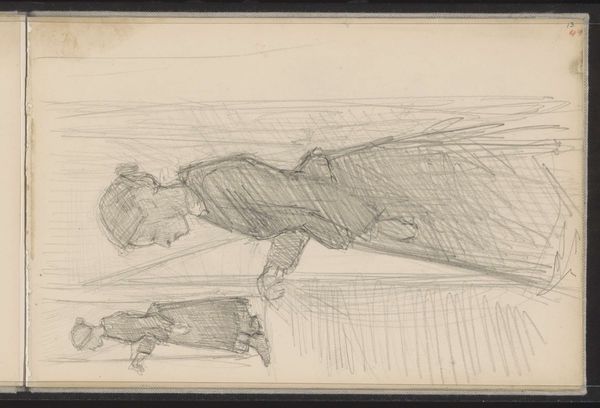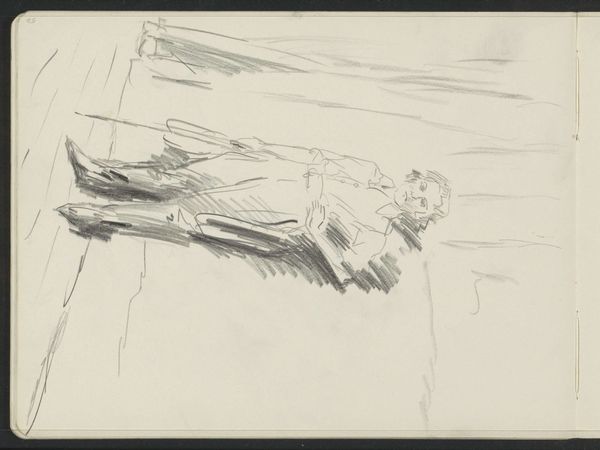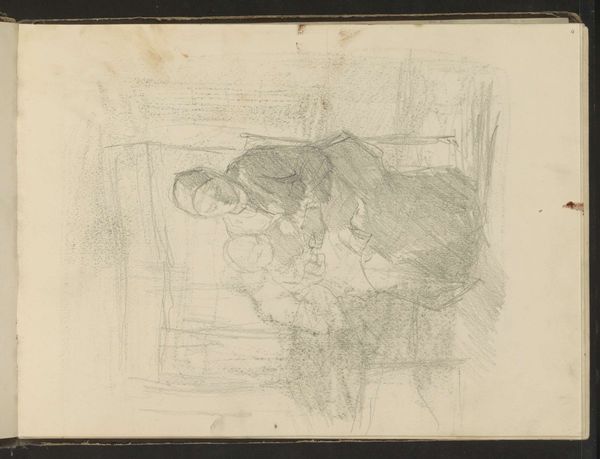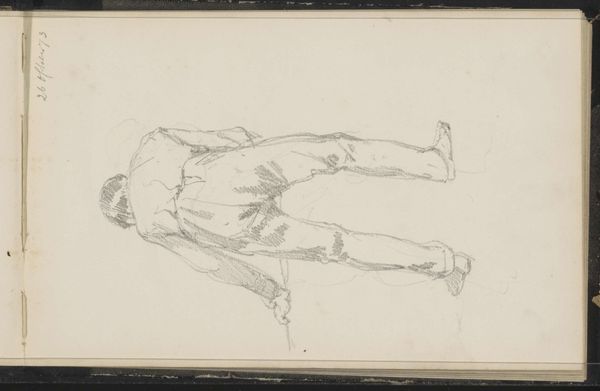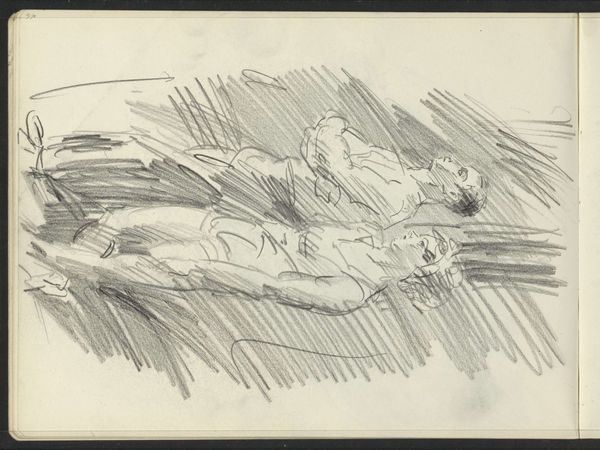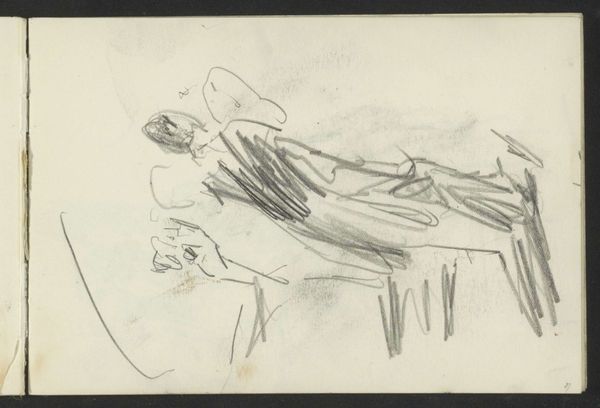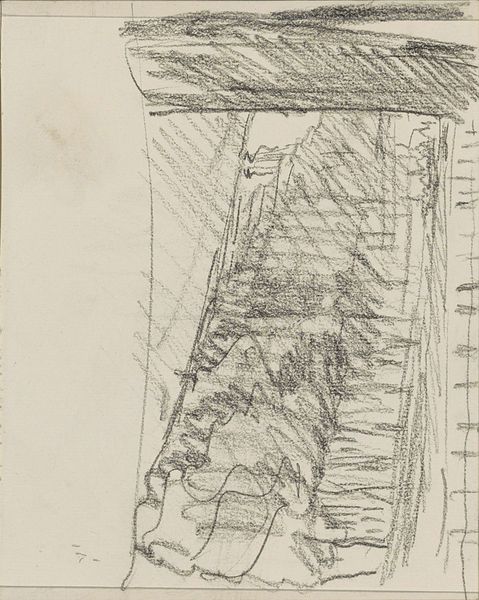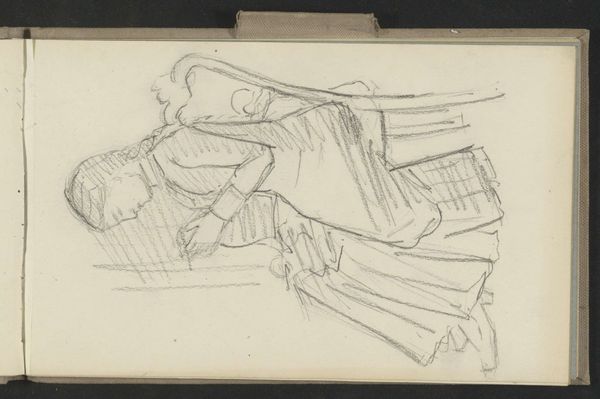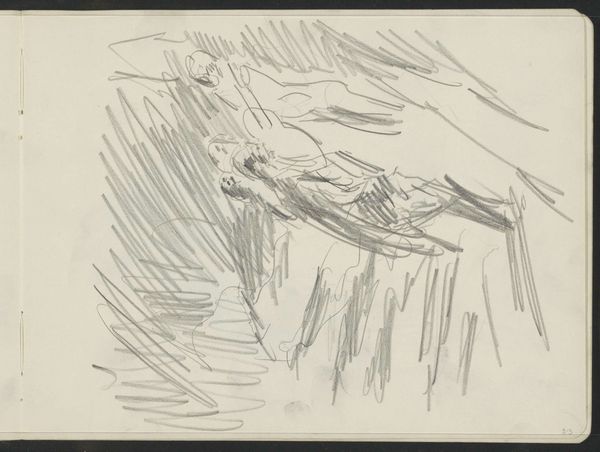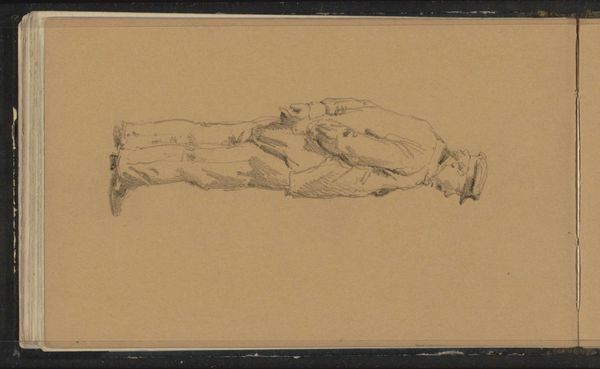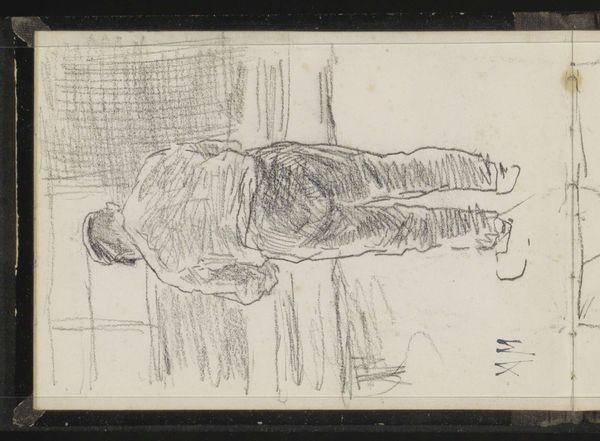
drawing, pencil
#
portrait
#
drawing
#
toned paper
#
pen sketch
#
sketch book
#
incomplete sketchy
#
figuration
#
personal sketchbook
#
ink drawing experimentation
#
pen-ink sketch
#
pencil
#
pen work
#
sketchbook drawing
#
genre-painting
#
sketchbook art
#
realism
Copyright: Rijks Museum: Open Domain
Curator: Interesting work, this pencil drawing "Standing Woman with Flowerpot in a Doorway" by Jozef Israëls, likely from sometime between 1834 and 1911, at the Rijksmuseum. It's just a quick sketch, really, very understated. What are your initial thoughts? Editor: I'm struck by the tentative nature of the lines. It feels unfinished, almost like a study of form. It makes me think about the artist's process - how he's building up the image through these layers of marks. Is that something you notice, too? Curator: Absolutely. The very 'unfinished' quality speaks volumes. It highlights the artist's hand, the labor of creating. We see the process of image construction directly. Think about the toned paper, the pencil or pen. Why sketchbooks at all? For quick observation, of course, but also perhaps as portable sites for experimentation, free from the pressures of finished works and markets. Editor: That’s a great point. I hadn't really considered the sketchbook as a workspace in itself, removed from the pressures of producing a 'finished' artwork for public consumption. Do you think that the materiality of the sketch itself – the pencil strokes, the visible corrections – influenced the aesthetic of his larger, more formal works? Curator: Without a doubt. Consider how this study informed his engagement with form, light, and subject in larger works. Could you say the artist intended this sketch for public viewing? Was it conceived for sale or display? I’d argue this exposes the underbelly of artistic production, revealing how Israëls understood form through material exploration. This piece blurs the lines between labor, study, and 'art'. Editor: That makes me see the sketch in a totally different light. Thanks for pointing that out. Curator: Of course. Reflecting on artistic production brings forth new views on an artist’s material choices and reveals hidden processes that are often overshadowed by finished works.
Comments
No comments
Be the first to comment and join the conversation on the ultimate creative platform.
